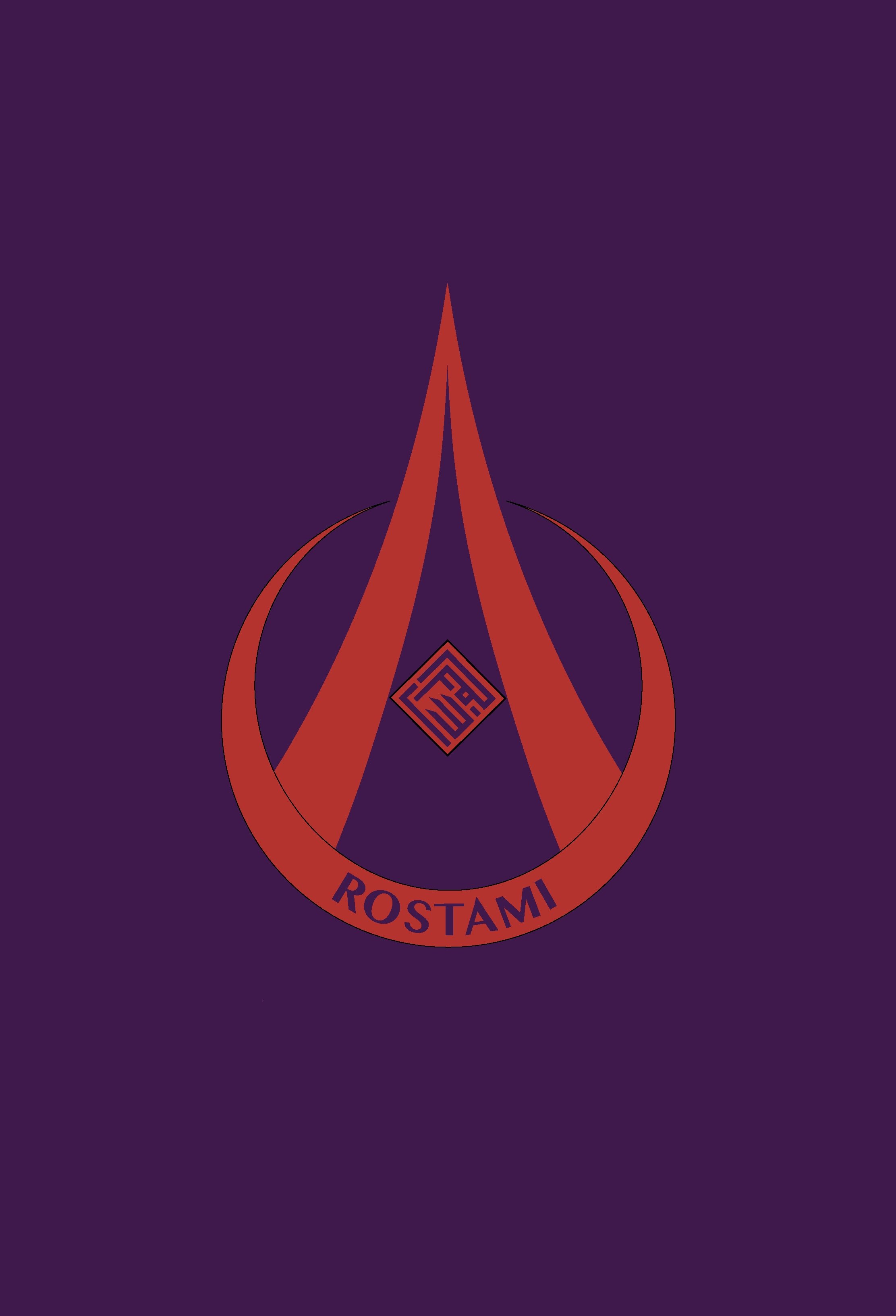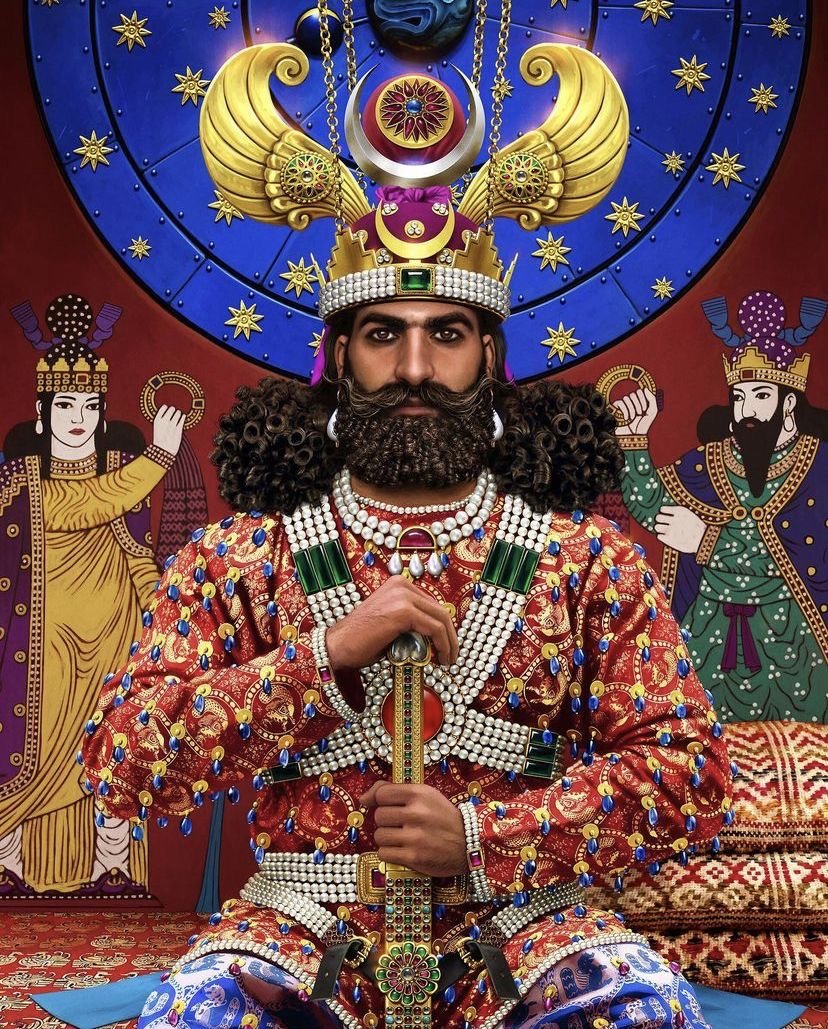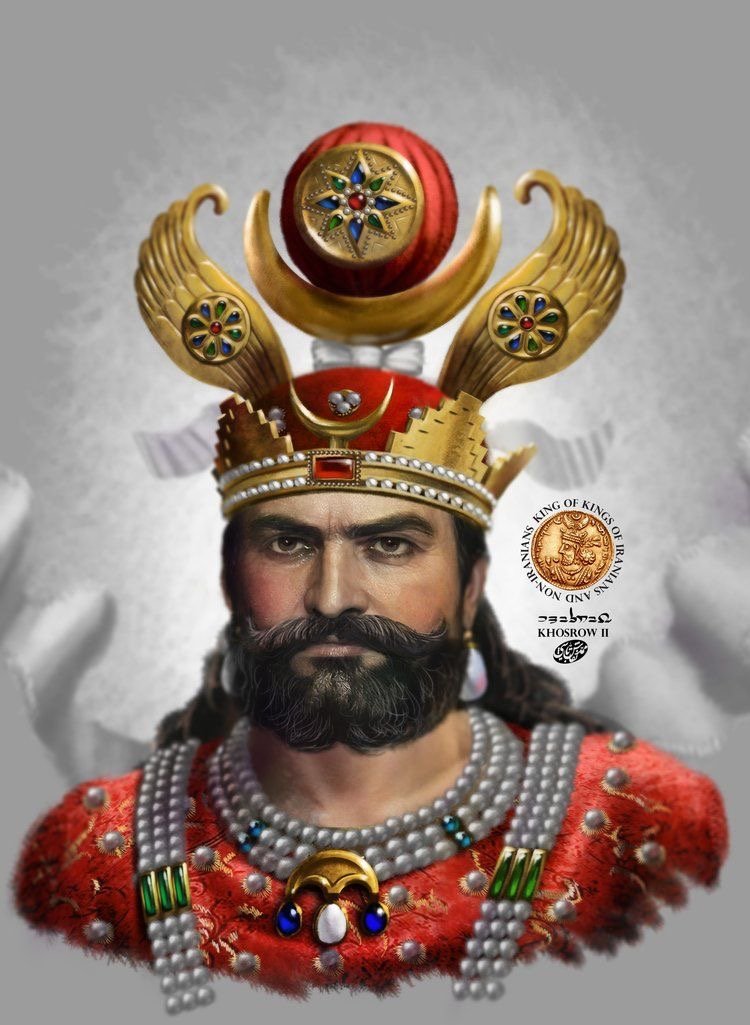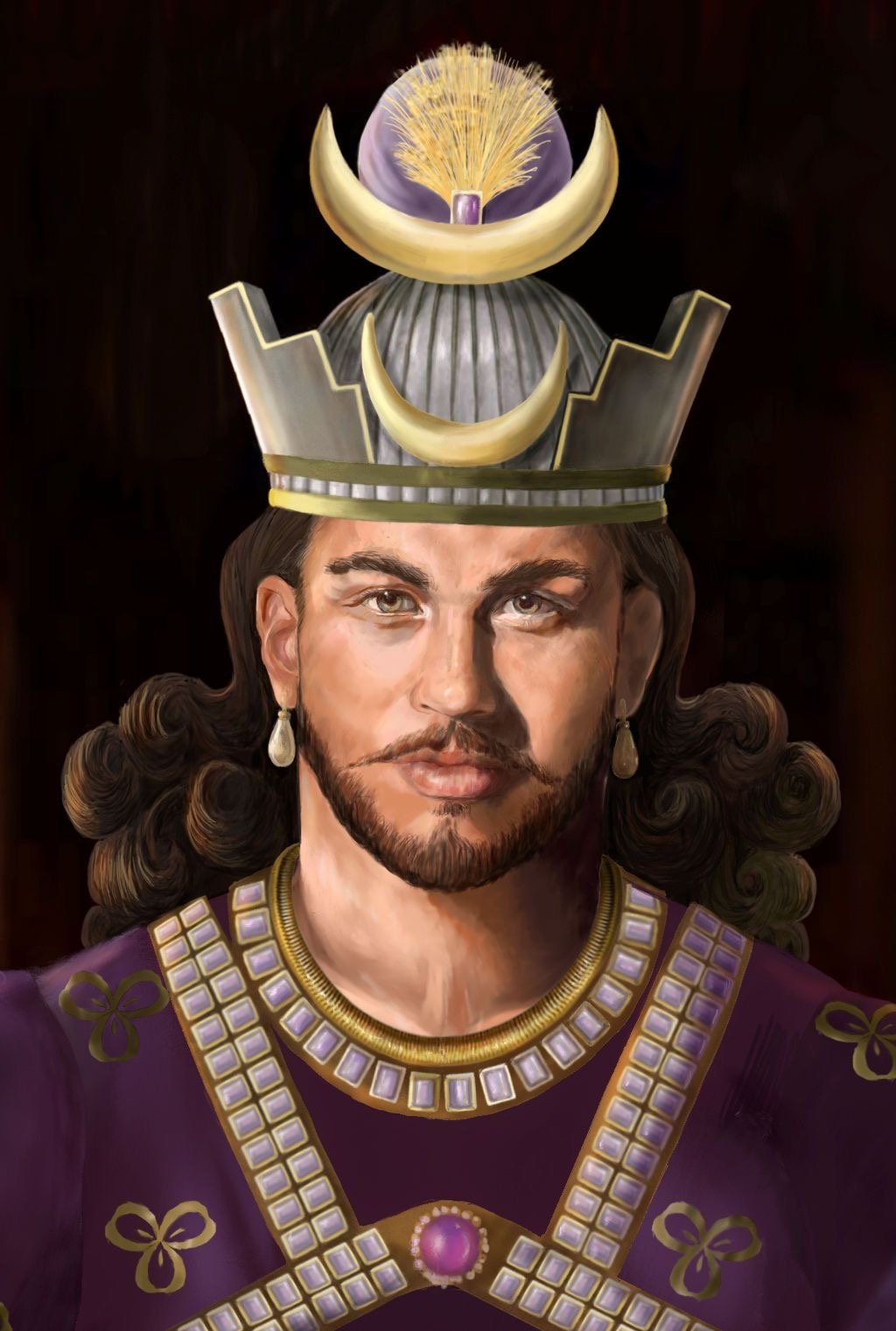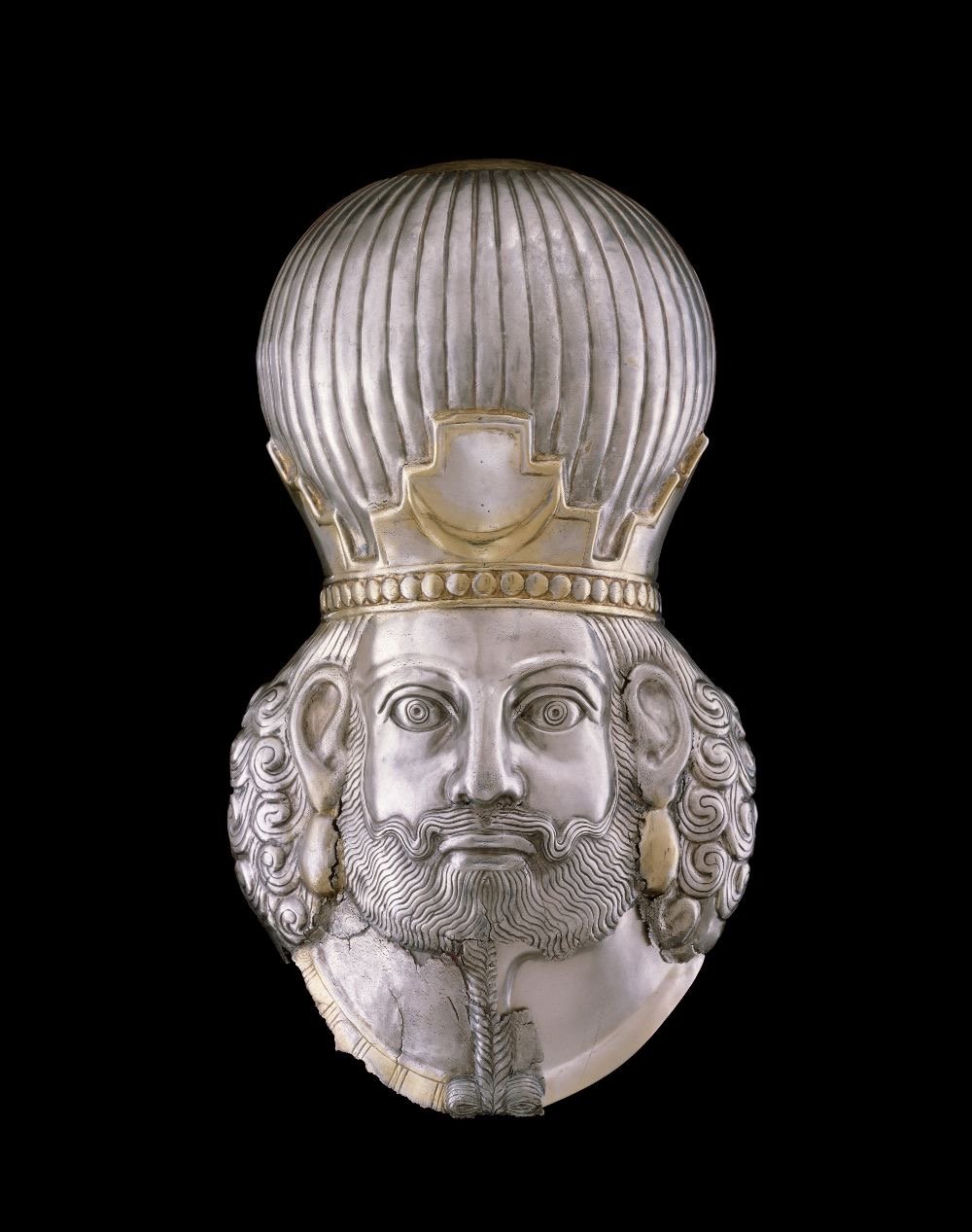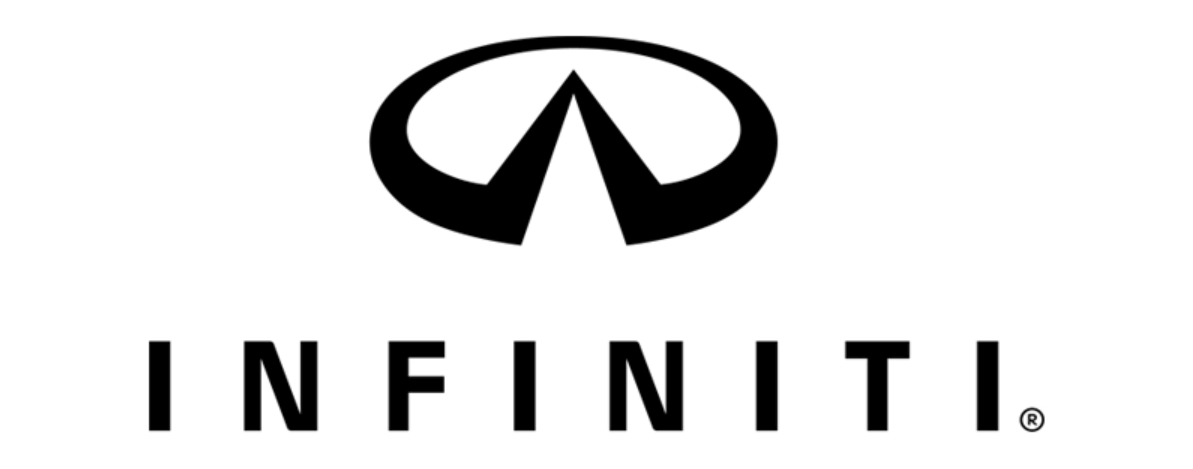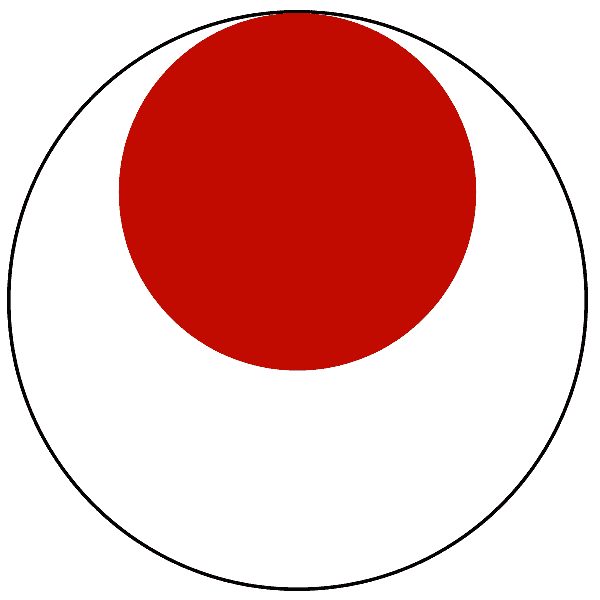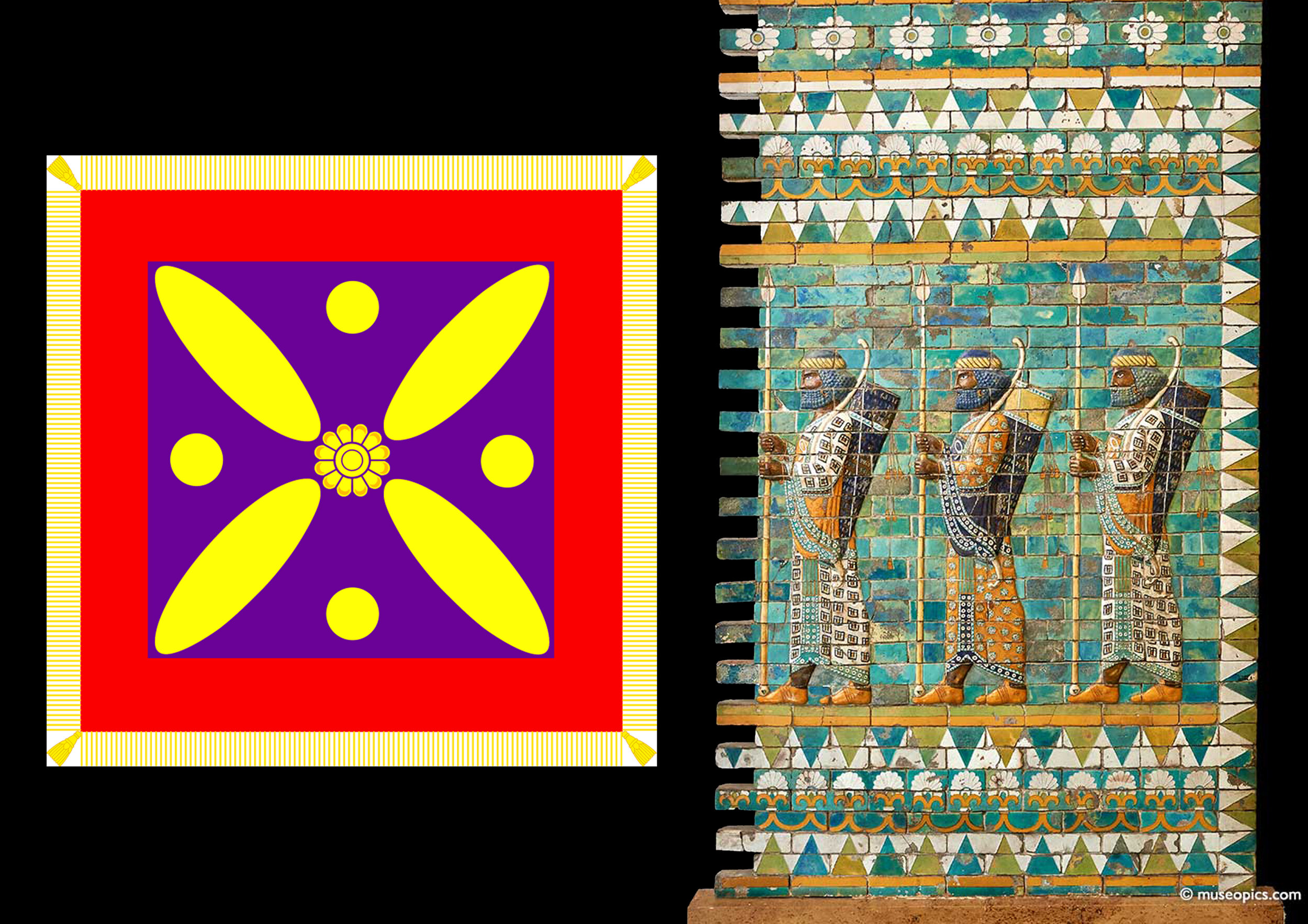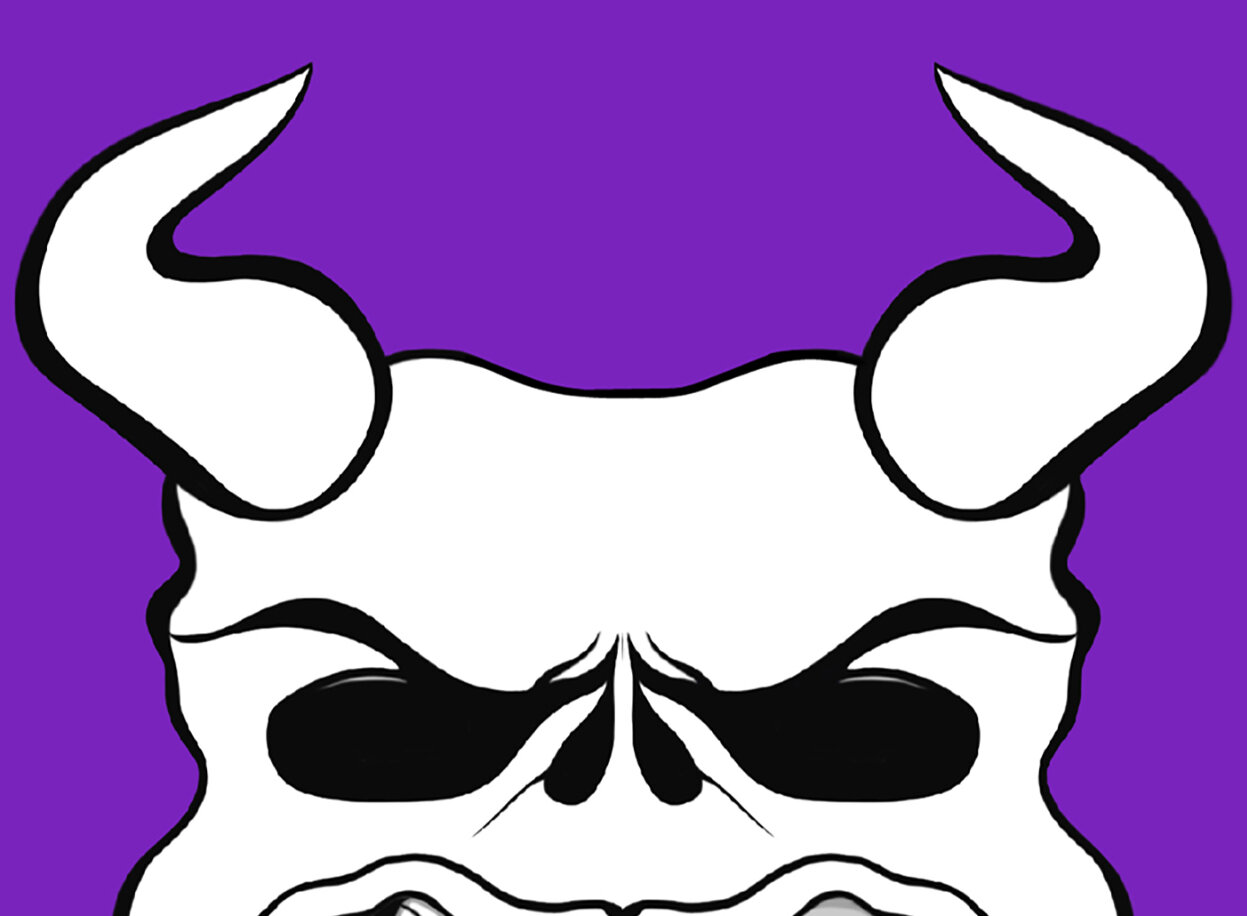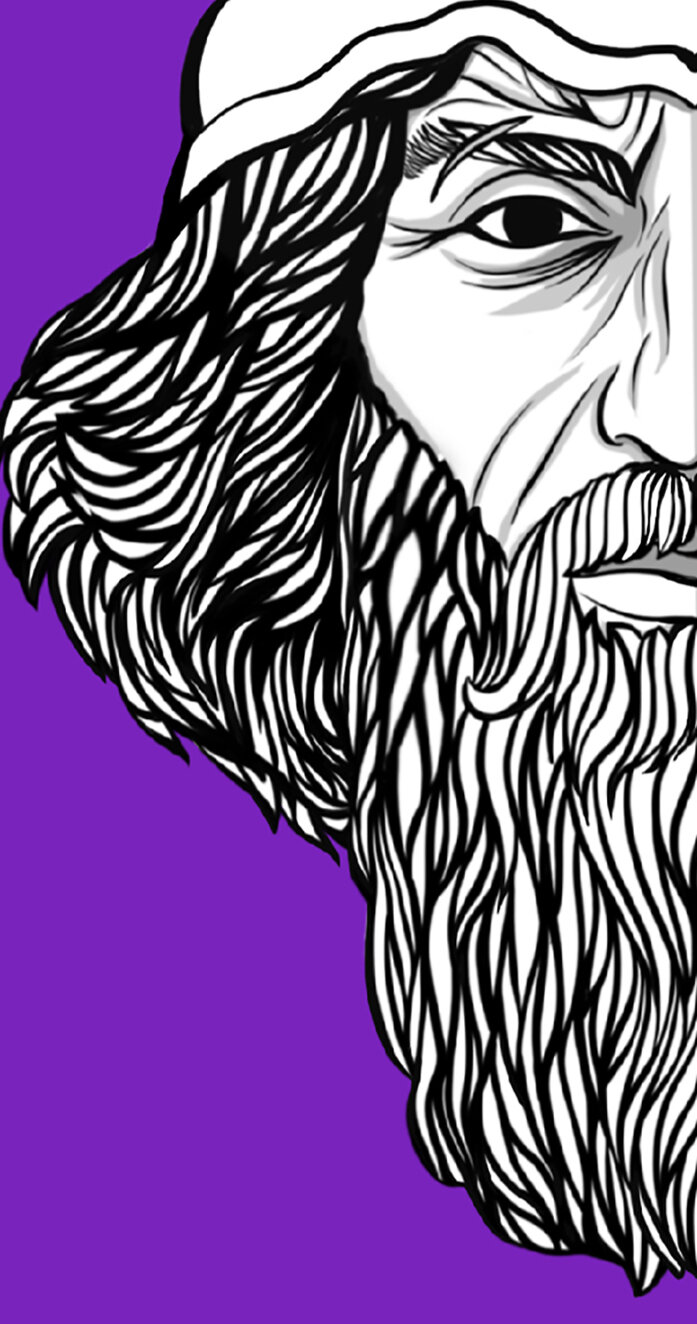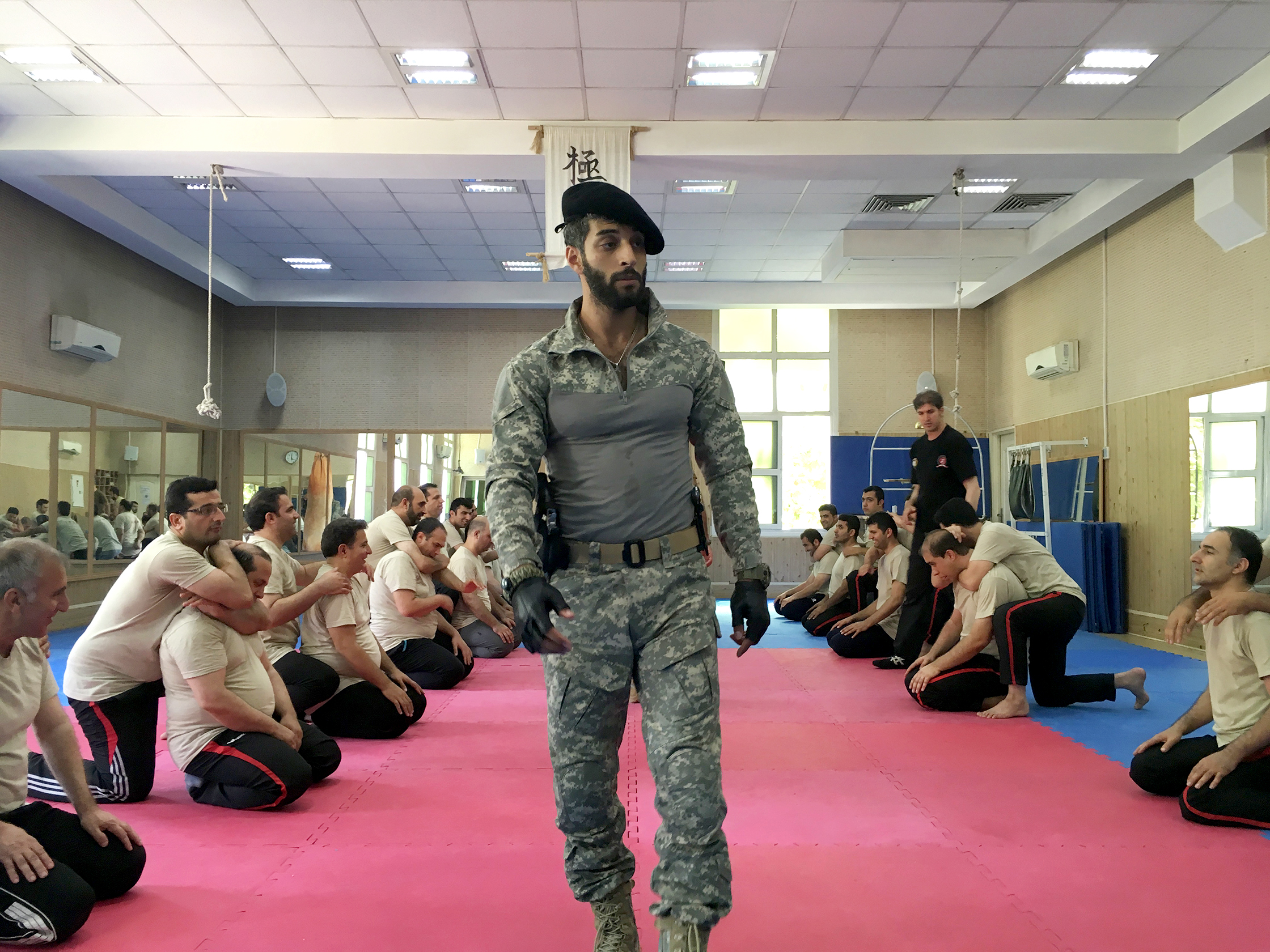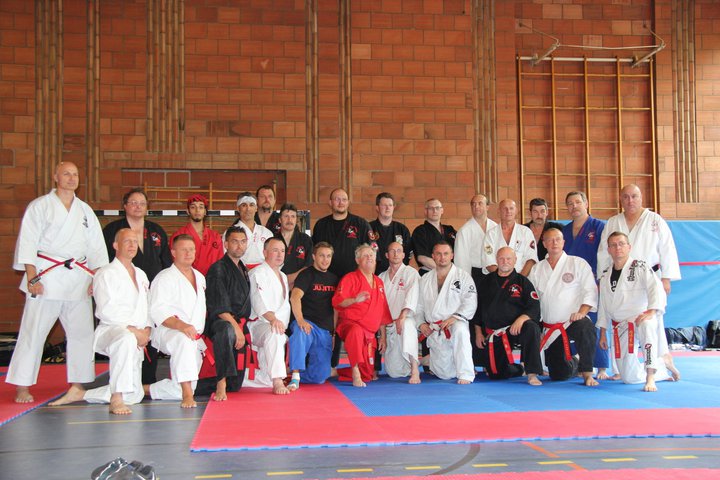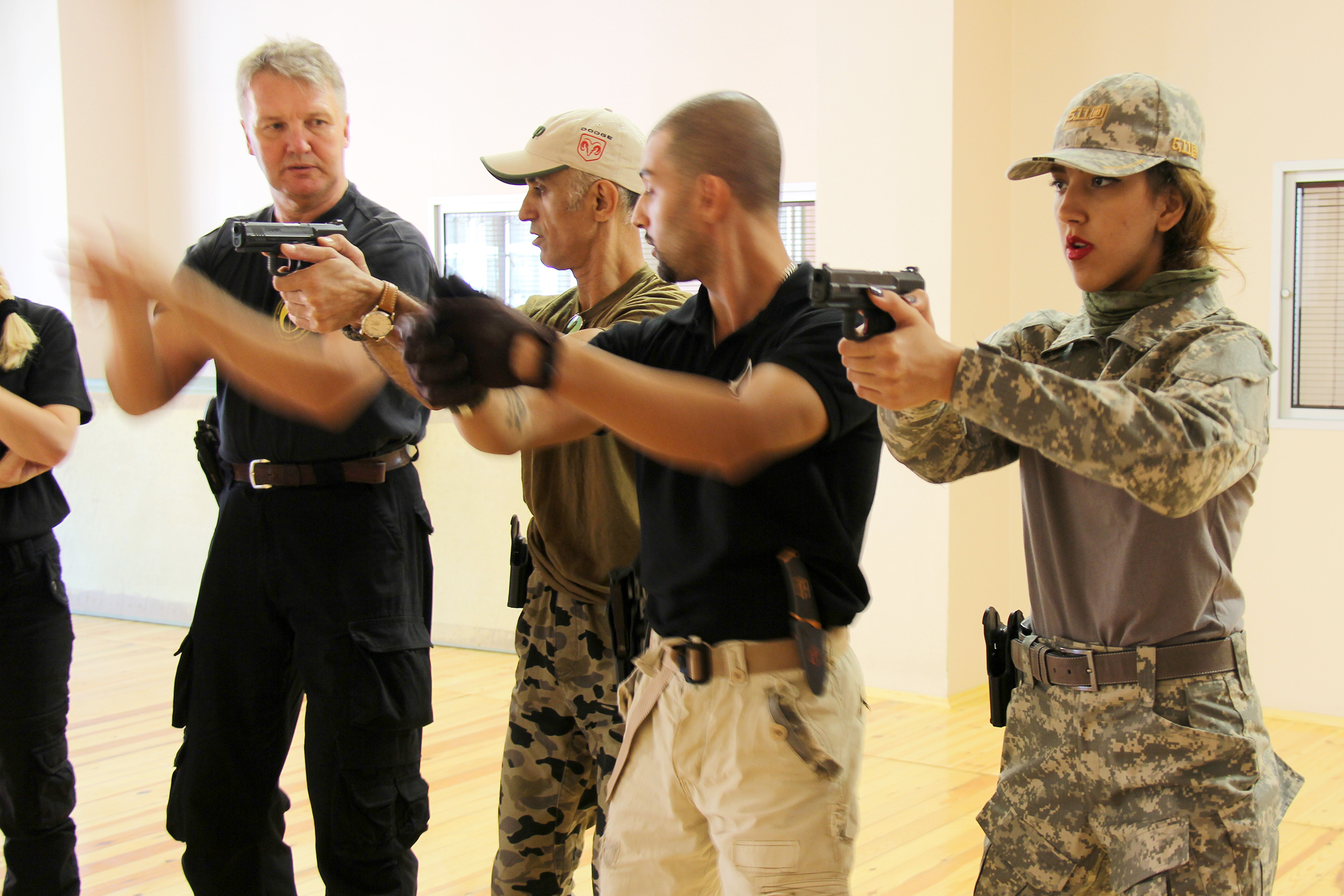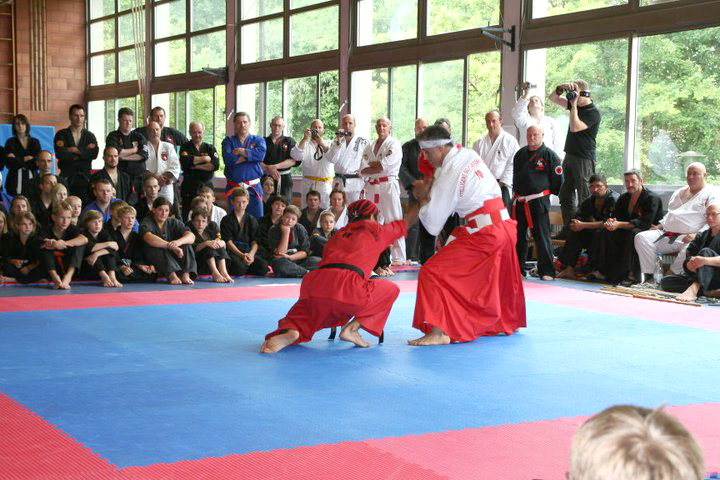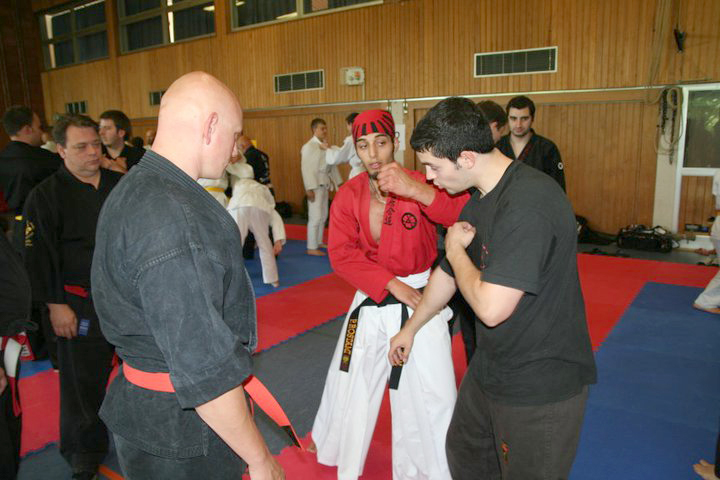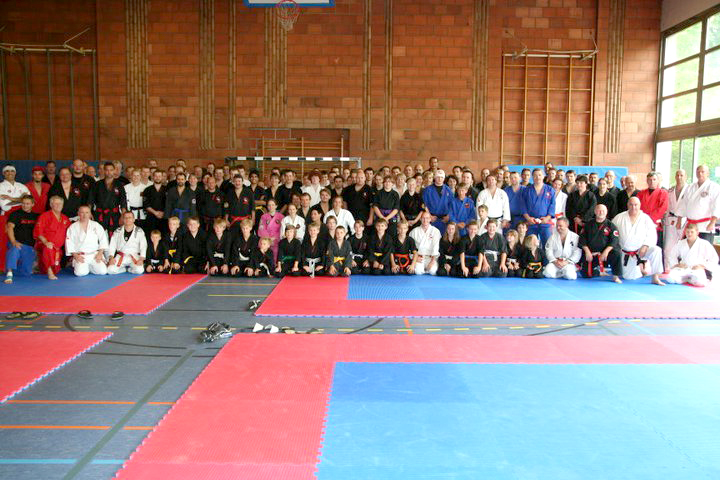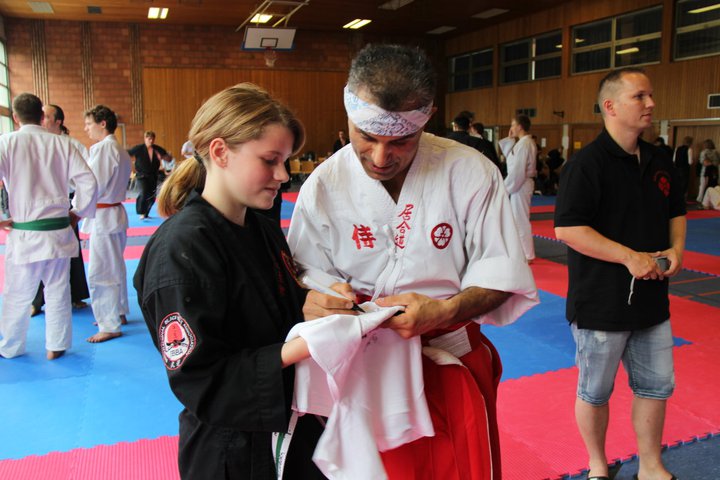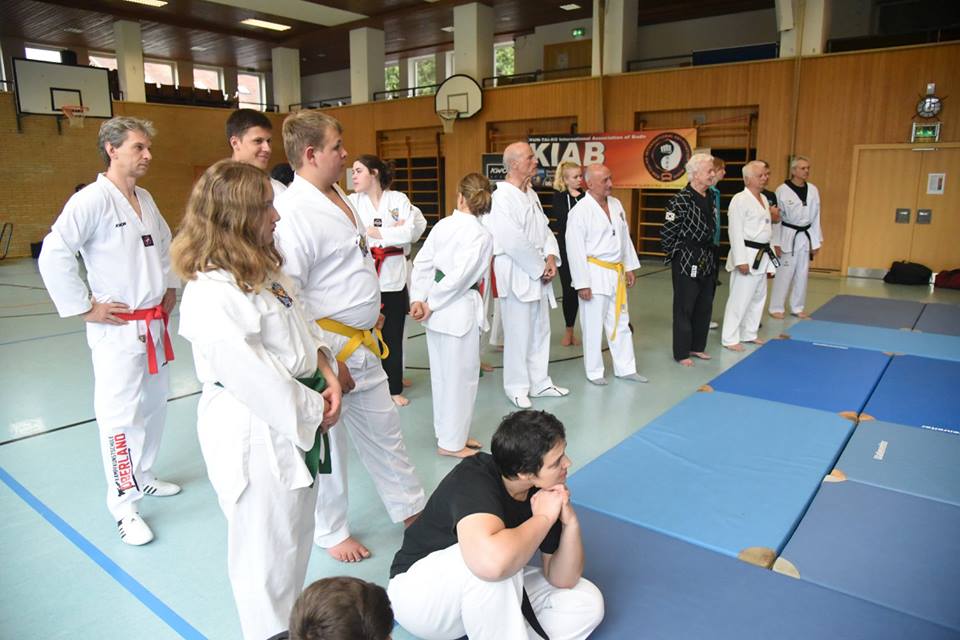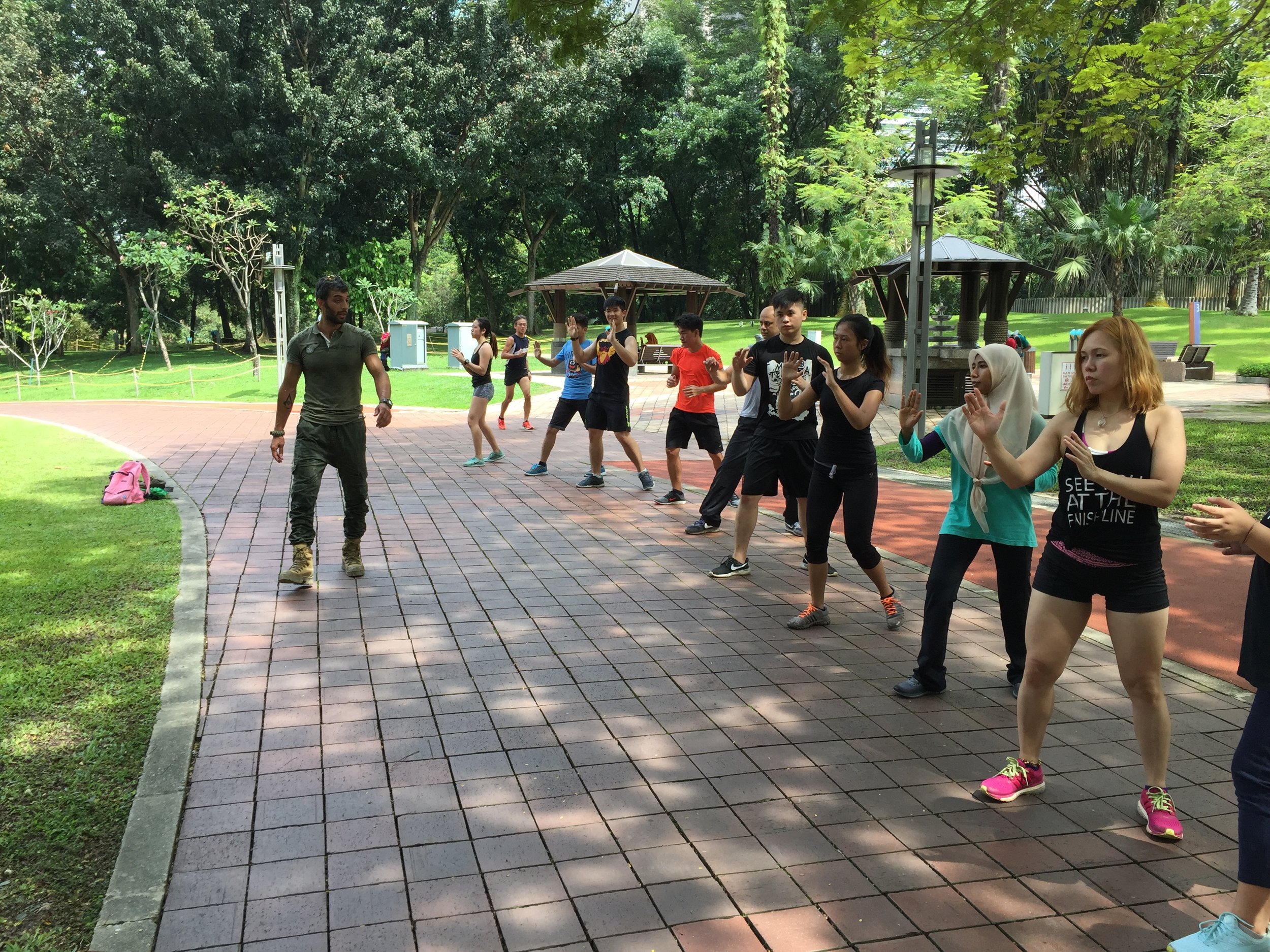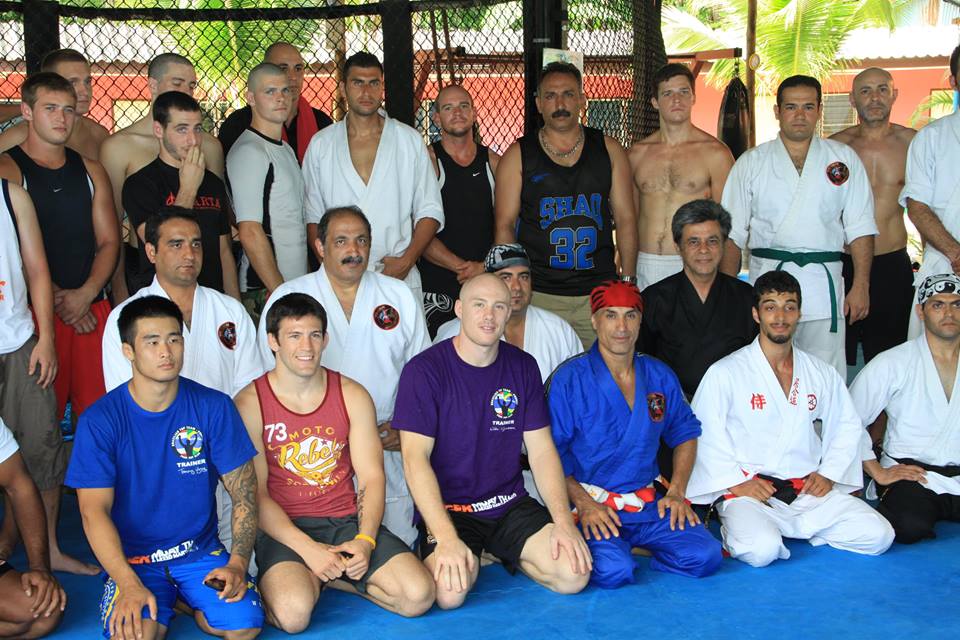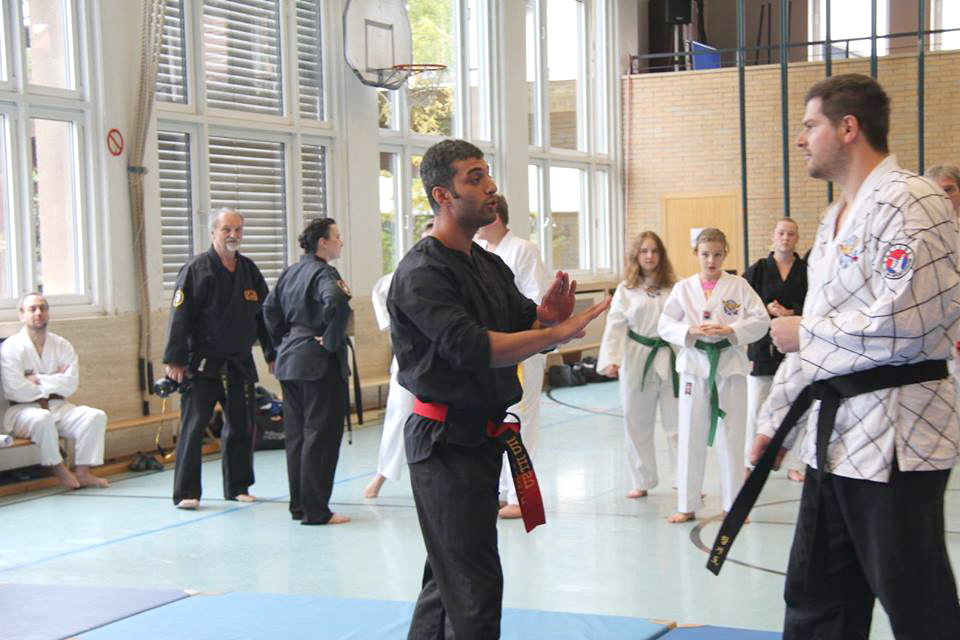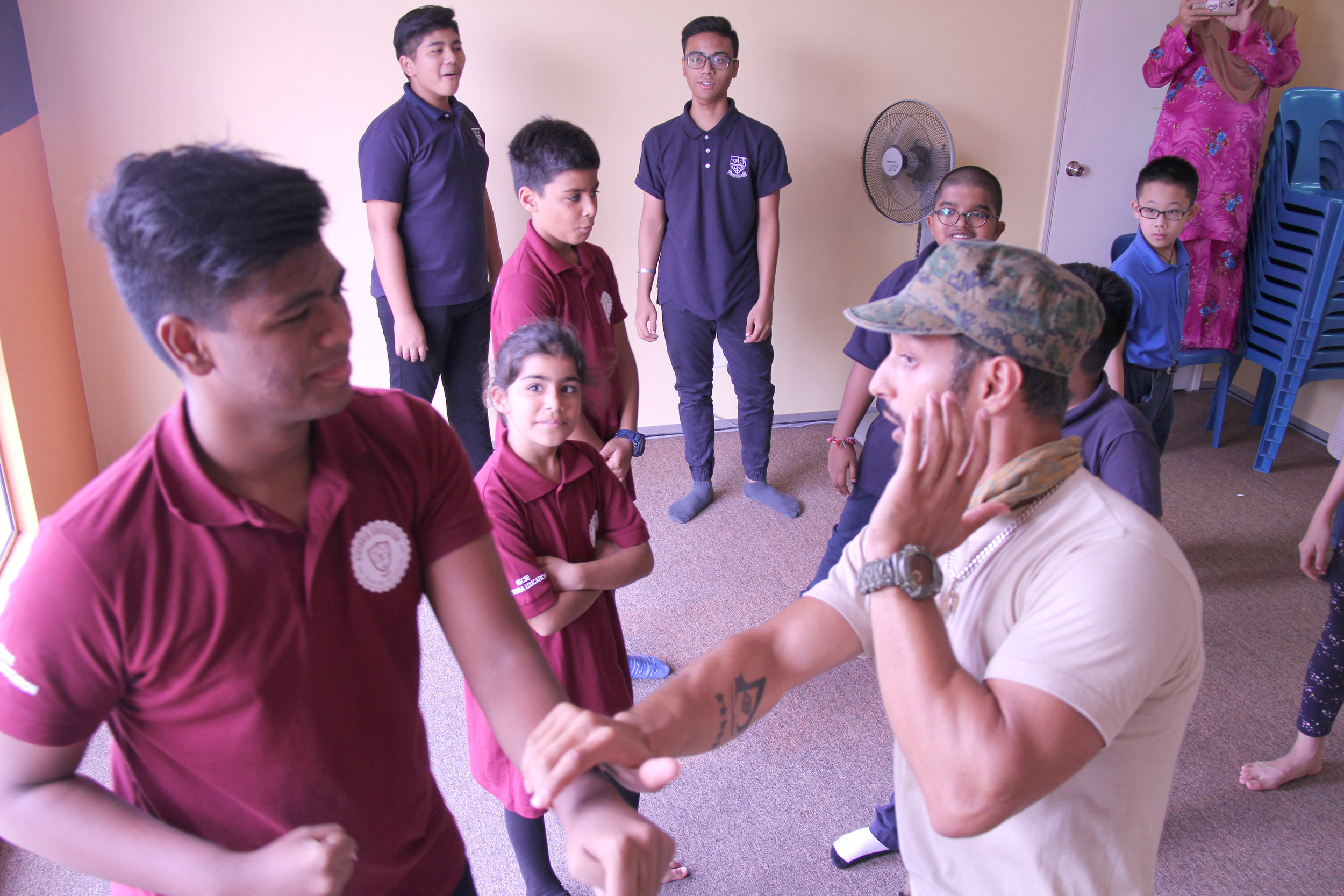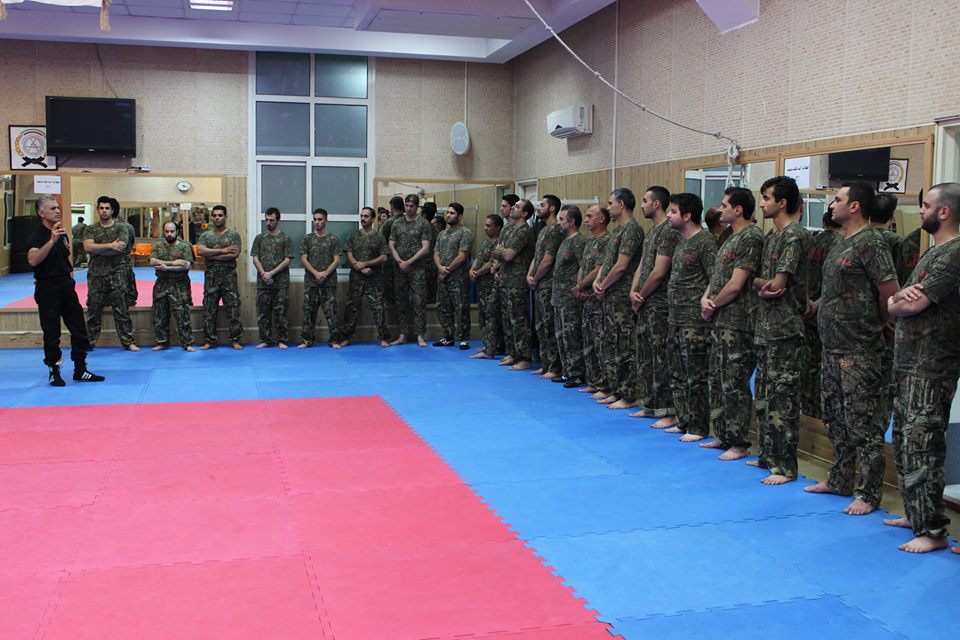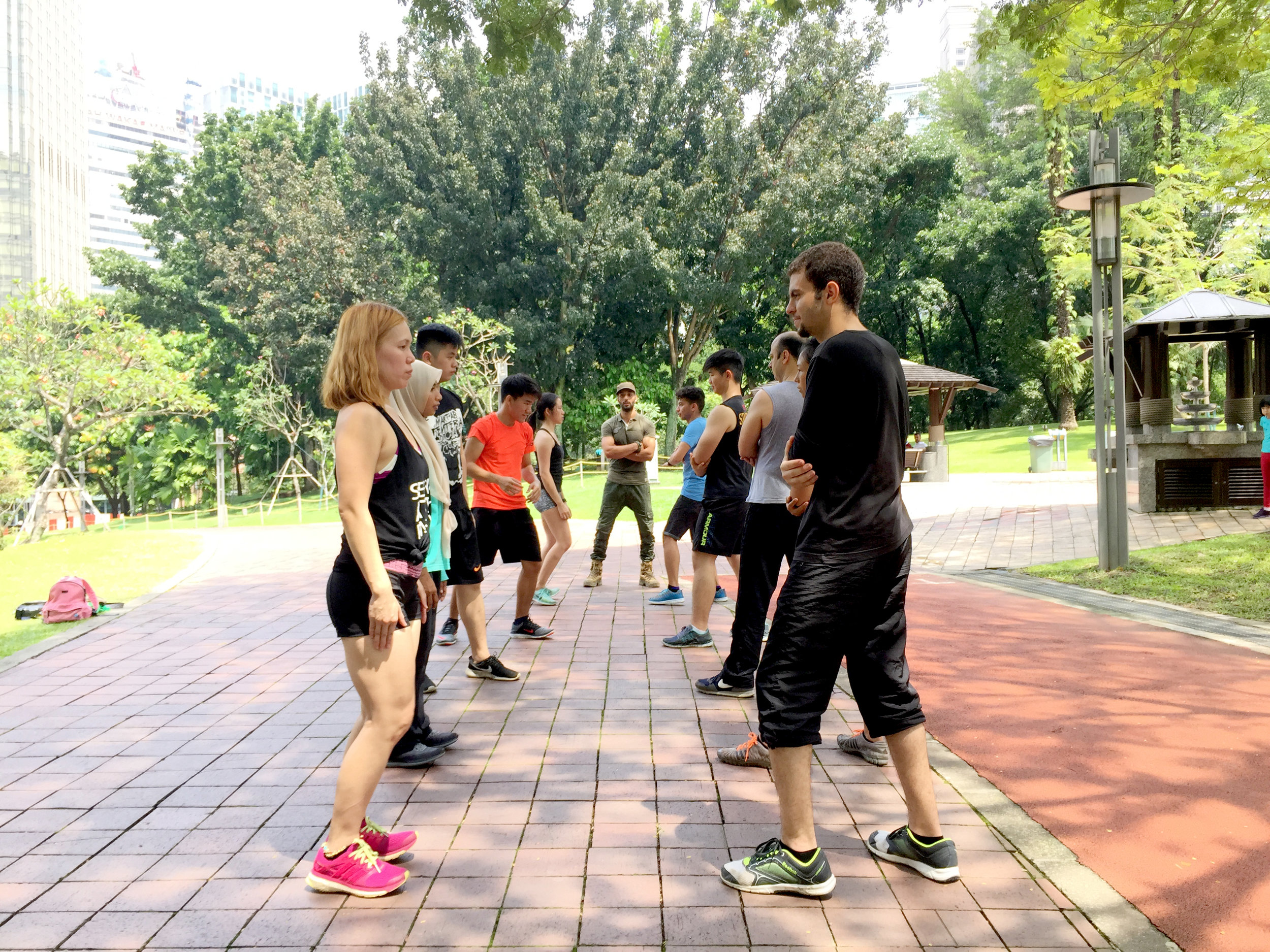Our ROSTAMI SELF DEFENSE emblem is inspired by Iranians shahansha (king of the kings) which dates back to more 12000 years ago, we have founded some evidences that Iranian kings were using the KIHAN emblem for more than 30,000 years as their flags or on theirs crown, swords, daggers or their tunics. Assassins of Iran used the same emblem, interestingly later on Samurai warriors adopted the KIHAN on their helmets and armours too. Today Japanese marital arts uses the same emblem everywhere such as Japan Karare Association, Even Infiniti car brand from Japan.
logo’s Interpretation
Triangles Border
Inspired from below Coloured glazed terracotta brick panels depicting Achaemenid Persian royal bodyguards (510 BC). The 3 main colors as purple,yellow and red were legendary Persian royal standard flag colors known as Derafsh Kaviani.
Red color, is the color of TIR, the third day of Iranian’s week, TIR is the name of the Rain Angel, red is representing energy, war, danger, strength, power, determination as well as passion, desire, and love.
Yellow is the color of Ahuramazda day which today is called Sunday in English, which means day of SUN, it represents ancient Iranian religion known as Zoroastrianism, all the day’s names in western world is taken from Mitraism. Yellow is representing freshness, happiness, positivity, clarity, energy, optimism, enlightenment, remembrance, intellect and honor.
Purple, is the color of ORMAZD, the forth day of week which is Thursday, this color represent bravery, warfare, tough battle with enemies, fighting for the freedom, and protecting the unity and glory of the country.
Students uniform will be Red color in this style.
Purple Color
The color purple is often associated with royalty, nobility, luxury, power, bravery, and ambition. Purple also represents meanings of wealth, extravagance, creativity, wisdom, dignity, grandeur, devotion, peace, pride, mystery, independence, and magic.
The color purple’s ties to kings and queens date back to ancient Persia, where it was prized for its bold hues and often reserved for the upper crust. The Persian king Cyrus the great adopted a purple tunic as his royal uniform, and in addition Persians great warrior’s daggers were made of purple color.
As an example, obviously we can see how Queen Elizabeth used the Persian Purple color and even the Derafsh Kaviani (It was the legendary royal standard of Iran/Persia) on her crown.
Another example is The Purple Heart which is a United States military decoration awarded in the name of the President to those wounded or killed while serving, The Purple Heart is the oldest military award still given to U.S. military members
Our Surname
ROSTAMI is our family name that refers to the ancient most celebrated legendary hero of Persian mythology called Rostam. ROSTAMI in Persian means Indestructible Fearless Man.
Rostam was always represented as the mightiest of Iranian/Persian paladins (holy warriors),and the atmosphere of the episodes in which he features is strongly reminiscent of the Parthian period. He was immortalized by the 10th-century Persian poet Ferdowsi in the Shahnameh, or Epic of Kings (It is the world's longest epic poem ever). He passes through a hero's journey to save his sovereign, Kay Kavus who is captured by the demons (Divs) of Mazandaran. This journey is called "Rostam's Seven Quests" (Persian: Haft Khan-e Rostam).
Ferdowsi believed every human being in order to become the complete version of themselves must become one like ROSTAM.
The Skull
The skull belongs to Div-e Sepid (White Monster), he is the chieftain of the Divs (demons) of Mazandaran. He is a huge being which he possesses a great physical strength and is skilled in sorcery and necromancy.White monster is the last Khan of Rostam (Seventh quest) which Rostam will defeat him finally to free his sovereign. At the end, Rostam slays Div-e Sefid and uses his heart and blood to cure the blindness of the king and the captured Persian heroes. Rostam also takes the head of white monster as a helmet and is often pictured wearing it as a symbol of victory and being invincible warrior that even chief of monsters could not defeat him.
Horns
Horns also had cultural and religious root deeply in Iran beside the story of white monster, representing strength and aggressiveness. They are also the power and dignity of the divinity, and horned gods usually represent warriors and lords of animals. Horns could be symbol of masculinity.
Cyrus the great with horns on his crown
Dhul-Qarnayn in Quran means two horns, which described Cyrus the great (The king of the kings-500 BC). Horns represent salvation and immortality as well, as the horn is extremely durable. Kings and noble warriors in Iran adorned headdresses with horns as a symbol of strength, supremacy, sovereignty, leadership, invincibility and regal dignity. Horns meant glory.
Striding figure with ibex horns, a raptor skin draped around the shoulders, and upturned boots ,ca. 3000 BC, Mesopotamia or Iran, Metropolitan Museum of Art
Grand Master Ali Rostami
On the left side of the logo we see the face of Grand Master Ali Rostami the founder of The ROSTAMI. He is positioned on the right side of the logo since GM Rostami is right handed. We notice an middle aged man with long grey hairs and beard which it depicts experience and wisdom and intelligence that he acquired through hardships and challenges of life. Grand Master Ali Rostami represents ROSTAM the legendary Iranian hero.
Satur Poya Rostami
On the right hand side (Since Master Poya is lefty he is positioned on the left side which it harmonizes the logo with GM Ali Rostami on the right side) we realize Master Poya Rostami the son of Grand Master Ali Rostami, which the face represents youthfulness, strength, power and focus. Moreover we see curly hairs and beard which is the identity of Persian Immortal warriors and kings, we can see a lot of examples such as Cyrus the Great, Darius the Great, Xerxes the Great with the same style (curly hairs and beard) in the Persepolis. Master Poya represents Sohrab,the son of legendary Rostam, who was another Iranian legendary warrior. “when ten years were rolled above his head there was none in the land that could resist him in the games of strength.”
Beard
The Iranians from beginning were fond of long beards, and almost all the Iranian kings and warriors had a beard. Beards were viewed as central to a man's virility, exemplifying such virtues as wisdom, strength, sexual prowess and high social status, men spent extensive time curling and maintaining full beards. length and style reflected class and power,the higher one’s status in society, the longer the beard.
Darius the Great
Darius the great with long curled beard.
US Soldiers
Even today US Soldiers having beards on and they wear Keffiyeh which was used for 1000 of years back in Iran.
What Is ROSTAMI?
The essence of ROSTAMI SELF DEFENSE is not about conquering and having domination over individuals. Instead, it is the conquering and domination over one’s self-doubt and fear in order to defend and protect ourselves against aggressors. Our disciplined practice provides the critical tools to succeed in the midst of all life’s challenges. A few of these tools include, but are not limited to: timing, centered breathing, focus, ethical decision-making, effective strategic planning, quick action and reaction, critical thinking and so on.
Our ROSTAMI Self Defense & Personal Protection training program is designed for all individuals (private), VIPs, corporations, organizations or any public or private group who has a need or desire to improve or enhance personal safety.


